begin quote from:https://www.theguardian.com/us-news/2021/may/30/california-drought-water-shortage-photo-essayCalifornia faces another drought as lake beds turn to dust – a photo essay
Water shortages and dry conditions are already affecting the state as the governor has declared an emergency in 41 of 58 counties
Verdant hillsides losing their hue, receding reservoirs with bathtub rings of newly exposed earth, crops withering in the fields.
These are the visions of California’s parched landscape as the state braces for another potentially devastating drought. Water shortages and exceptionally dry conditions are already beginning to hit home.
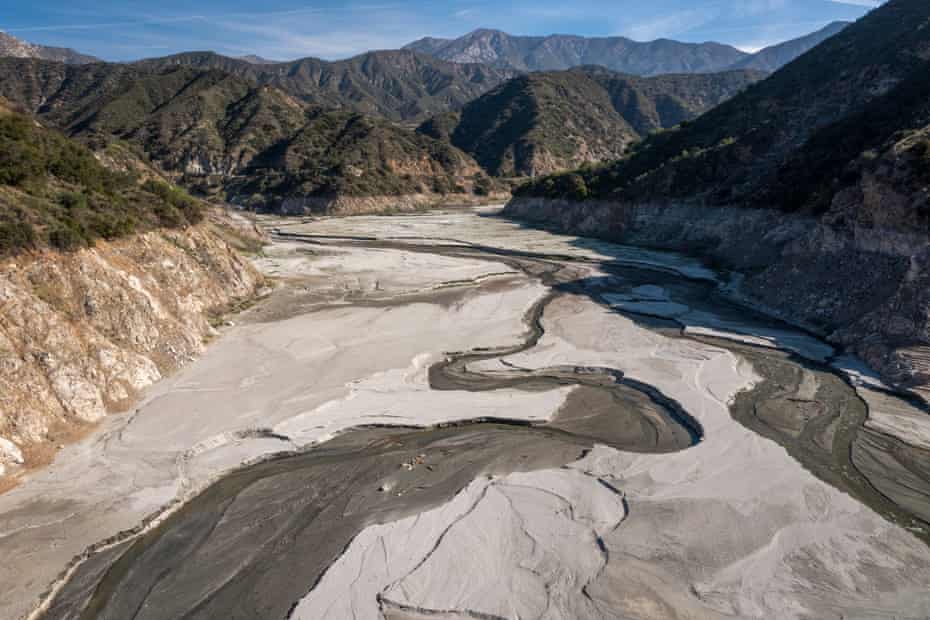
The San Gabriel reservoir lake bed is reduced to mud. Photographer: David McNew/Getty Images
The state is facing yet another hot, dry summer ahead, and the governor has declared a drought emergency in 41 of the state’s 58 counties. More than 37 million Californians reside in these drought areas, according to the US drought monitor.
“This is without precedent,” Newsom said at a news conference announcing the first two declarations in April, speaking from the bed of Lake Mendocino that had been reduced to arid, cracked clay. Not long ago, he would have been standing under 40ft of water. “Oftentimes we overstate the word historic, but this is indeed an historic moment.”
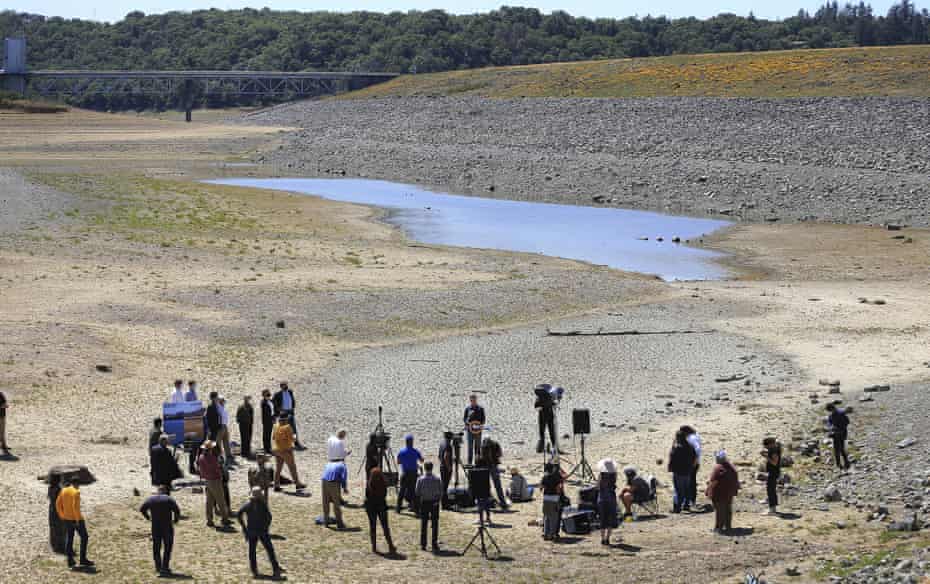
Governor Gavin Newsom holds a news conference in the parched basin of Lake Mendocino in Ukiah. Photographer: Kent Porter/Associated Press
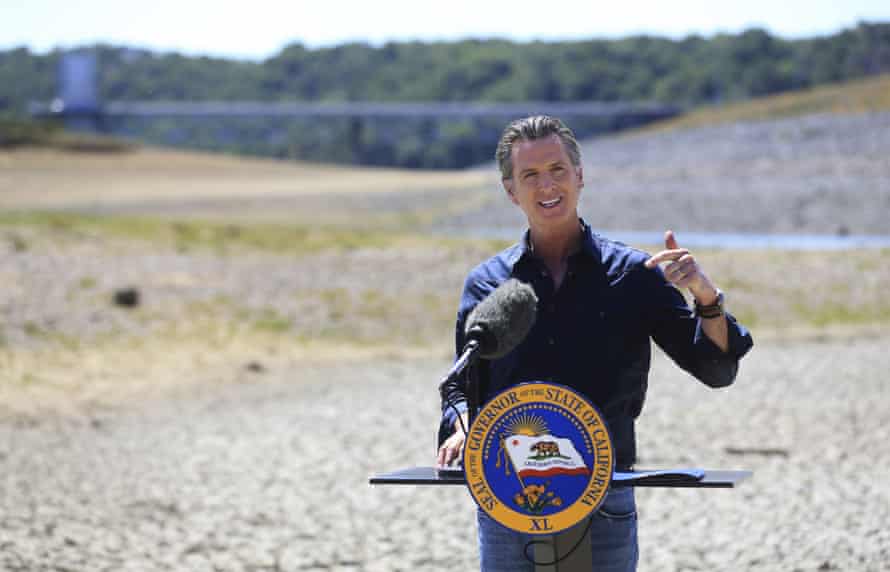
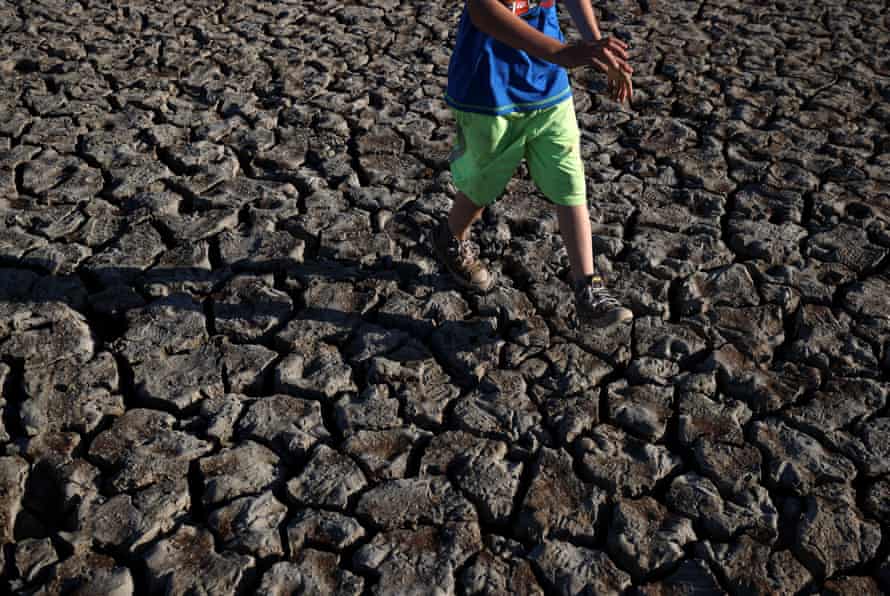
A child walks across the parched bottom of Lake Mendocino. Photographer: Justin Sullivan/Getty Images
Many of the state’s reservoirs are at extremely low capacity and levels are expected to drop further in the coming months. Already, the state’s 154 major reservoirs are collectively at 71% of where they typically are on average. Federal climate analysts with the National Integrated Drought Information System called the outlook for California’s reservoir levels recovery “grim” in their most recent report.
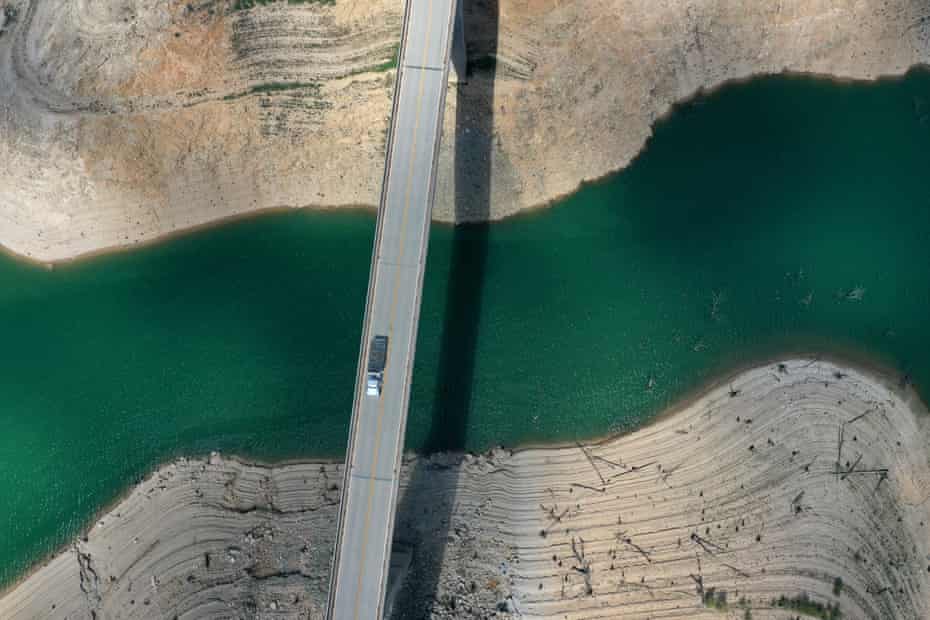
Water levels at Lake Oroville have dropped to 39% of capacity. Photographer: Justin Sullivan/Getty Images
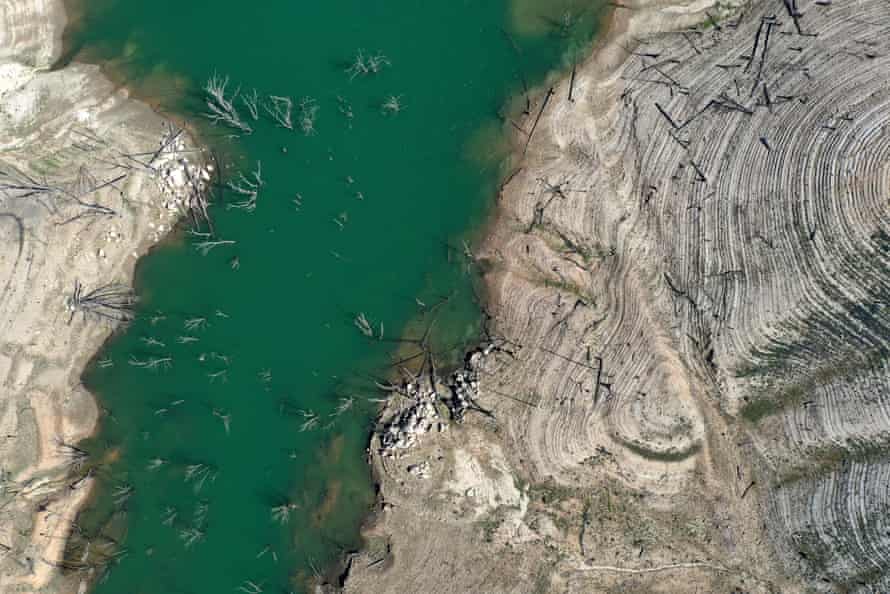

Houseboats in Lake Oroville are dwarfed by the exposed banks. Photographer: Justin Sullivan/Getty Images
The dry conditions are expected to fuel another potentially devastating and record-breaking wildfire season. In 2020, roughly 4.1m acres were consumed by the flames, tens of thousands of buildings burned and 31 people lost their lives.
These conditions only began to develop in May of last year, according to federal monitoring systems. But now into a second consecutive dry year – characterized by a hot summer and little rainfall to replenish the dehydrated landscape through the winter months – by mid-May this year 93% of the south-west and California was in drought, with 38% of the region classified at the highest level.
“It really stands out how rapidly this drought has developed and intensified,” said Brian Fuchs, a climatologist, during a webinar this week hosted by the NIDIC.
Northern California’s reservoirs, which heavily depend on the rapidly disappearing mountain snowmelt, have been among the hardest hit. Lake Shasta and Lake Oroville, two of the largest, have fallen to 44% and 39% of their total capacity respectively. Inflow into Lake Shasta is even lower than it was in 2014.
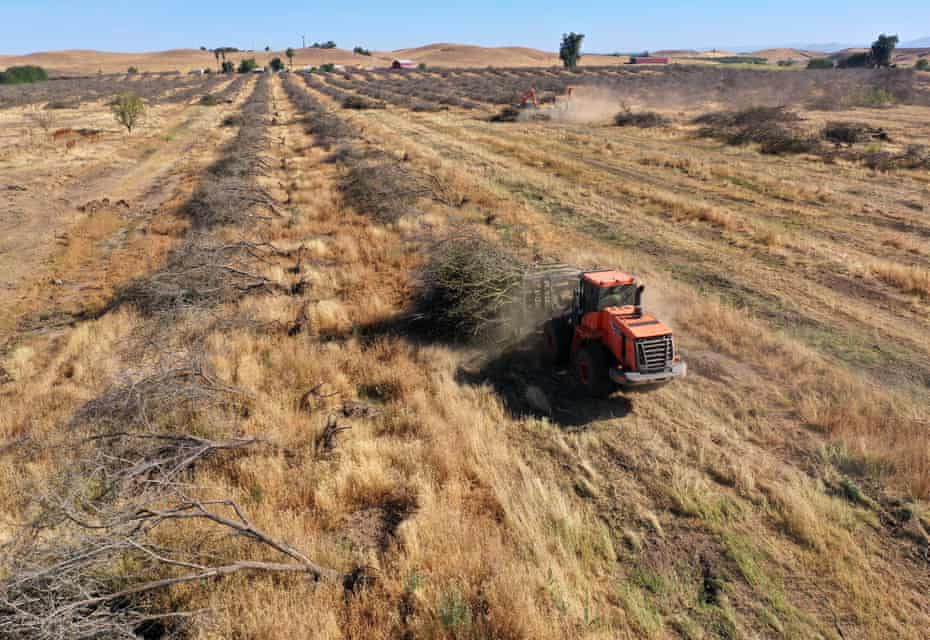
Many farmers are preparing for an expected water shortage by removing water-dependent crops, such as almond trees like these in Snelling. Photographer: Justin Sullivan/Getty Images
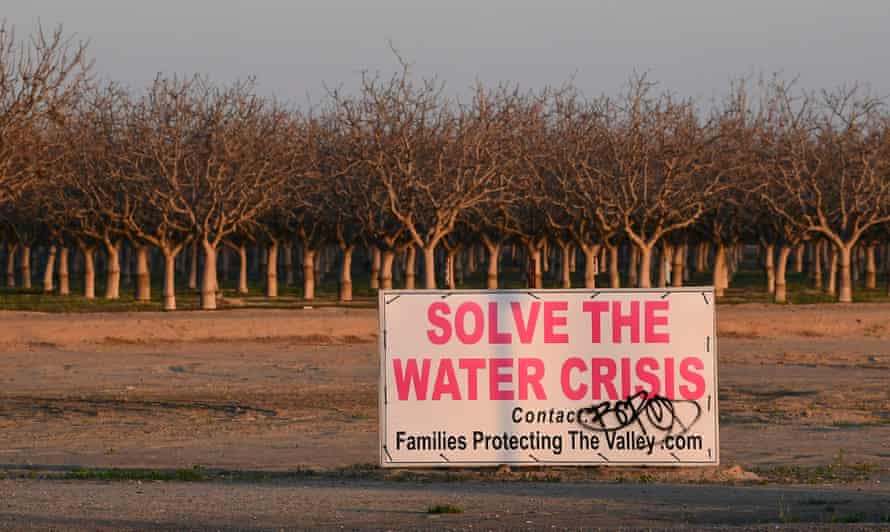
A sign in Buttonwillow, Kern county. Photographer: Frederic J Brown/AFP/Getty Images
To prepare for declining reserves, the California Department of Water Resources reduced farmers and growers to 5% of their expected water allocation in March. The move sparked an outcry from California’s agricultural belt, which is likely to be hit hard by the drought.
During the last drought, between 2014 and 2016, the agriculture industry lost roughly $3.8bn, and more than half a million acres couldn’t produce for lack of water. Farmers and ranchers have already begun to cull crops, fallow fields, and thin their herds in preparation.
Officials have also had to step in to help salmon raised in the state’s central valley region reach the Pacific Ocean, as waterways grow too shallow and warm for them to safely make the journey. Tens of millions of young fish will instead be trucked out to sites across the coast.
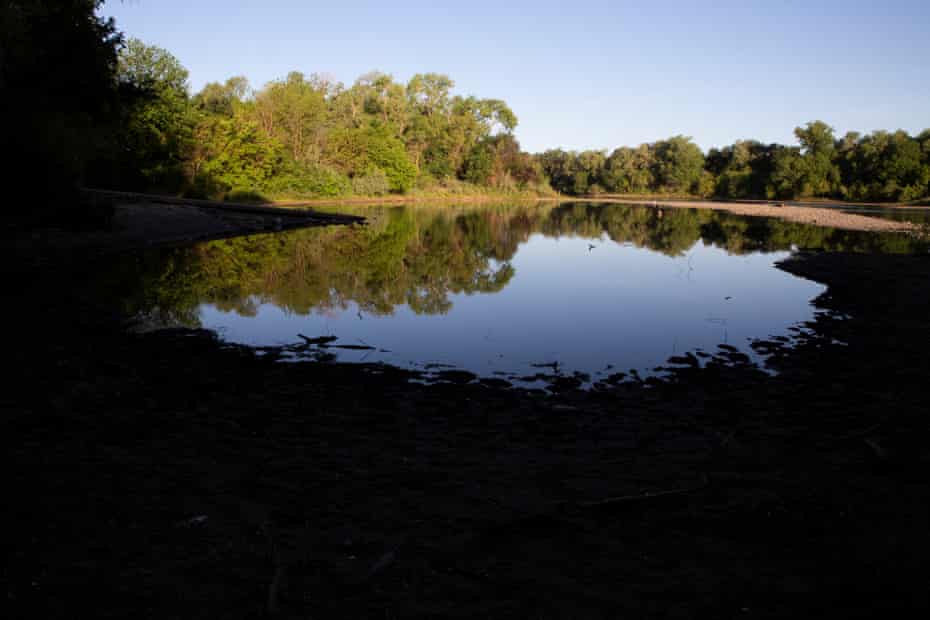
With rivers like the American River growing too warm and shallow for fish to reach the ocean, juvenile Chinook salmon will be transported by truck. Photographer: Nina Riggio/Reuters
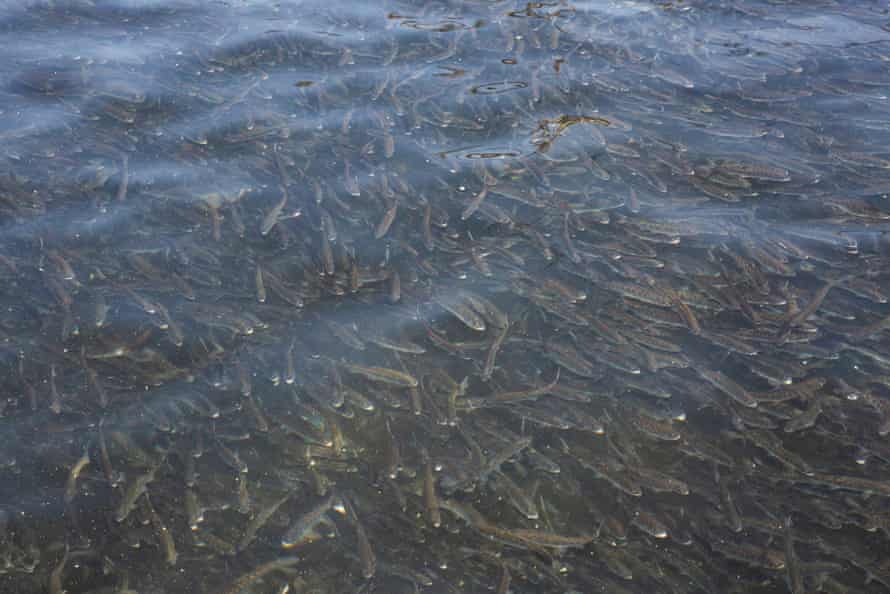
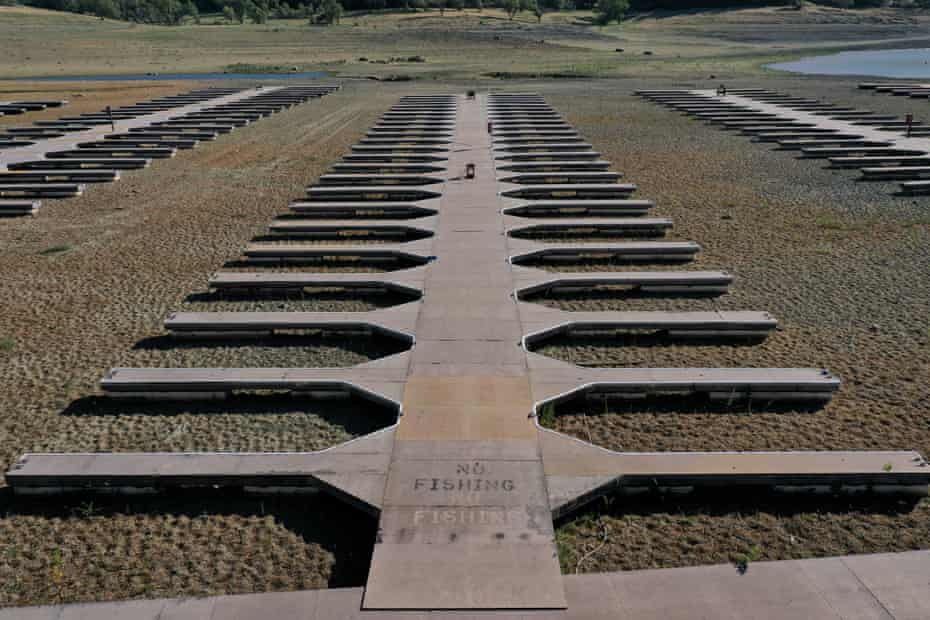
Boat docks sit on dry land at Folsom Lake in El Dorado Hills. Photographer: Justin Sullivan/Getty Images
Drought has always played a part in California’s climate, and it’s not unusual for the region to see periods of dry years interspersed with wetter ones. But, rising temperatures are fueling deeper extremes and climate scientists believe the cycle will only intensify.
With only a short two-year reprieve since the state was declared drought-free – after the period between 2012 and 2015 became the driest four-year period recorded – the negative impact that dry conditions had across the state are still fresh in residents’ minds.
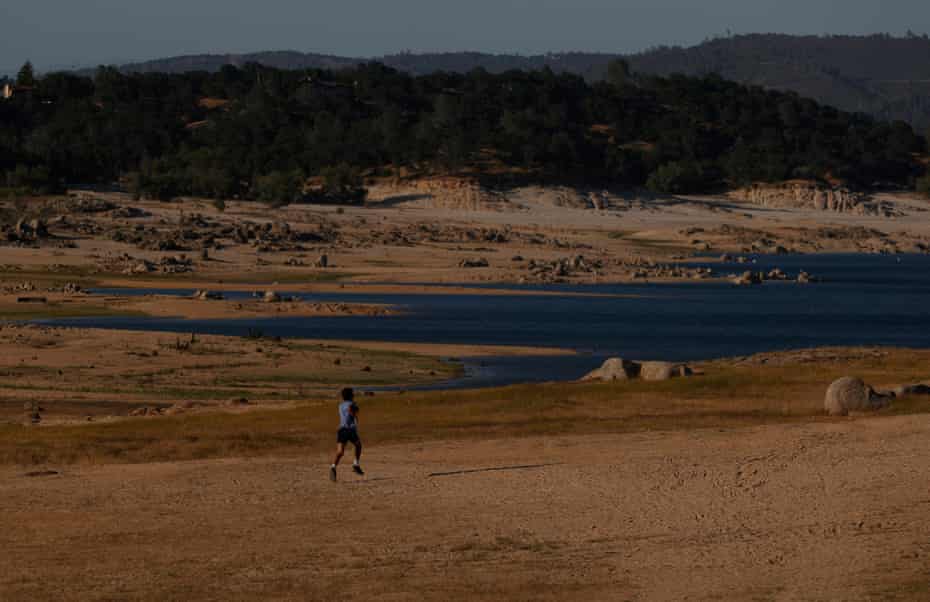
A park visitor runs on the dry Folsom Lake bottom in Granite Bay. Photographer: Justin Sullivan/Getty Images

A resident fills a water tank with recycled water from a fill station in Oakley.
In an attempt to mitigate some of the expected impacts, Newsom has earmarked $5.1bn over four years for water infrastructure and drought response. The state is also hoping to apply key lessons learned through the last drought period, including establishing new standards of use for water, increasing efficiency requirements, and assessing and intervening when water systems fail. Still, as conditions worsen, the state will continue to call on residents to adapt.
“It’s time for Californians to pull together once again to save water,” said California Natural Resources Agency Secretary Wade Crowfoot in a statement issued with the emergency declaration. Encouraging shorter showers and limiting wasted water during every-day activities like dishwashing and teeth brushing, he added, “all of us need to find every opportunity to save water where we can”.
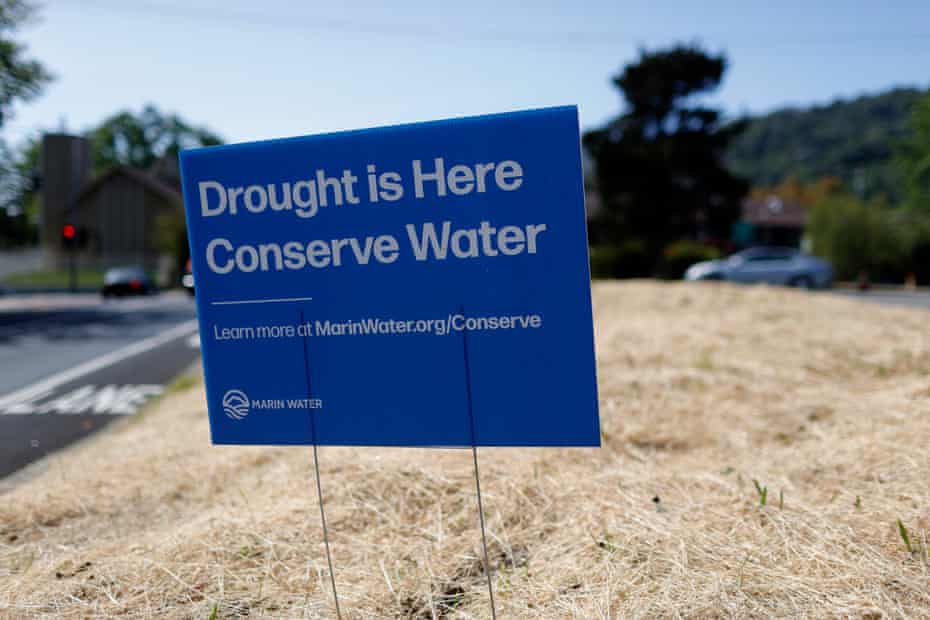
Marin county became the first county to impose mandatory water-use restrictions on 1 May. Photographer: Justin Sullivan/Getty Images
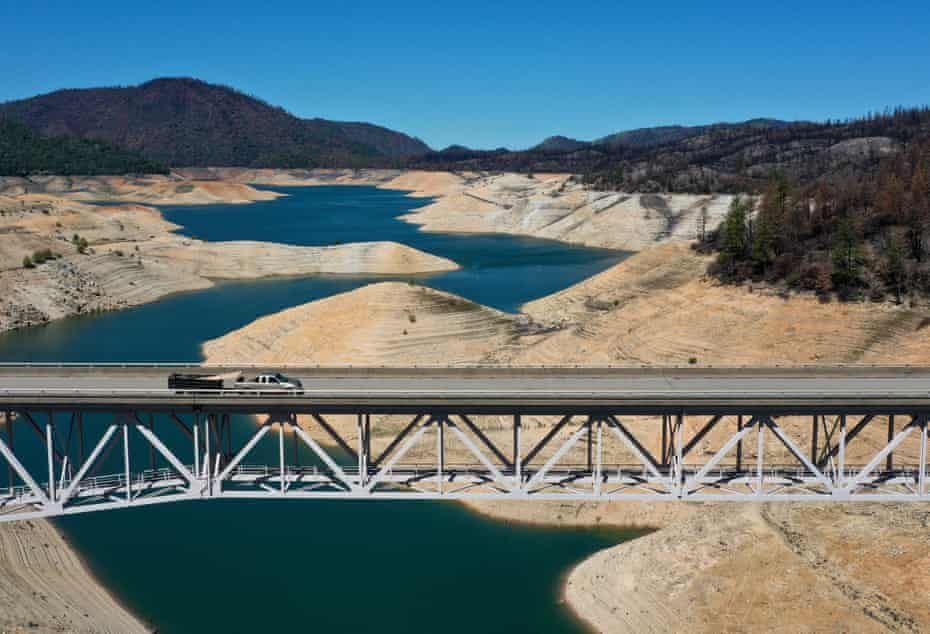
No comments:
Post a Comment